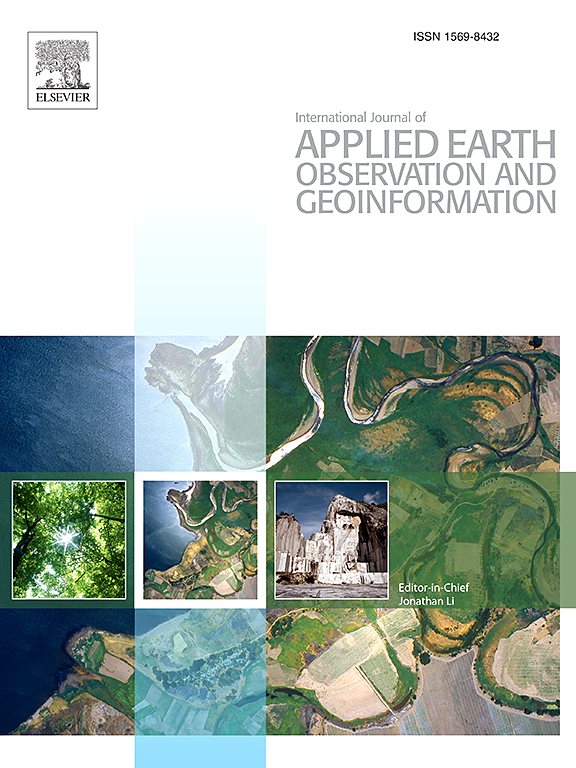Towards the next generation of Geospatial Artificial Intelligence
IF 7.5
1区 地球科学
Q1 Earth and Planetary Sciences
International Journal of Applied Earth Observation and Geoinformation
Pub Date : 2025-01-20
DOI:10.1016/j.jag.2025.104368
引用次数: 0
Abstract
Geospatial Artificial Intelligence (GeoAI), as the integration of geospatial studies and AI, has become one of the fastest-developing research directions in spatial data science and geography. This rapid change in the field calls for a deeper understanding of the recent developments and envision where the field is going in the near future. In this work, we provide a quantitative analysis of the GeoAI literature from the spatial, temporal, and semantic aspects. We briefly discuss the history of AI and GeoAI by highlighting some pioneering work. Then we discuss the current landscape of GeoAI by selecting five representative subdomains including remote sensing, urban computing, Earth system science, cartography, and geospatial semantics. Finally, we highlight several unique future research directions of GeoAI which are classified into two groups: GeoAI method development challenges and GeoAI Ethics challenges. Topics include heterogeneity-aware GeoAI, knowledge-guided GeoAI, spatial representation learning, geo-foundation models, fairness-aware GeoAI, privacy-aware GeoAI, as well as interpretable and explainable GeoAI. We hope our review of GeoAI’s past, present, and future is comprehensive and can enlighten the next generation of GeoAI research.求助全文
约1分钟内获得全文
求助全文
来源期刊
CiteScore
10.20
自引率
8.00%
发文量
49
审稿时长
7.2 months
期刊介绍:
The International Journal of Applied Earth Observation and Geoinformation publishes original papers that utilize earth observation data for natural resource and environmental inventory and management. These data primarily originate from remote sensing platforms, including satellites and aircraft, supplemented by surface and subsurface measurements. Addressing natural resources such as forests, agricultural land, soils, and water, as well as environmental concerns like biodiversity, land degradation, and hazards, the journal explores conceptual and data-driven approaches. It covers geoinformation themes like capturing, databasing, visualization, interpretation, data quality, and spatial uncertainty.

 求助内容:
求助内容: 应助结果提醒方式:
应助结果提醒方式:


